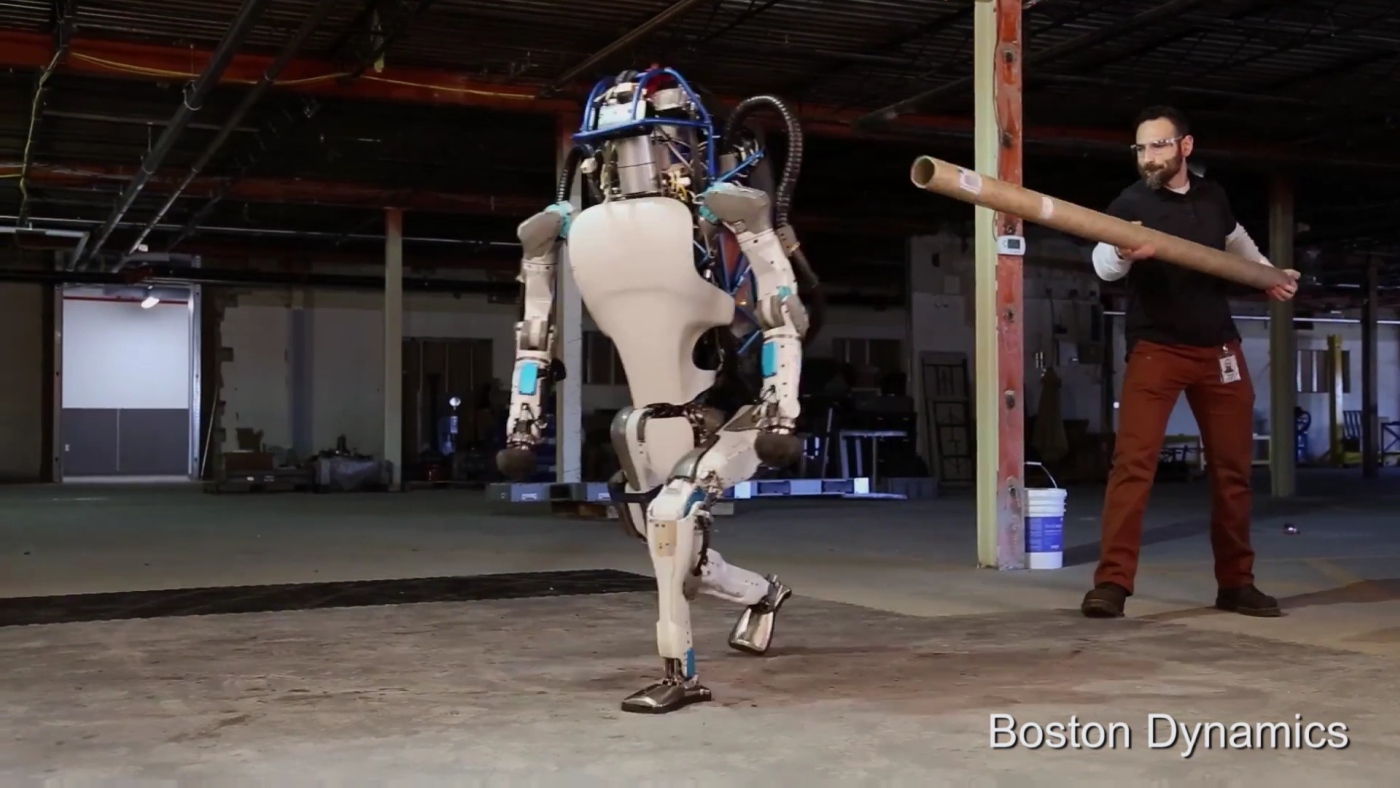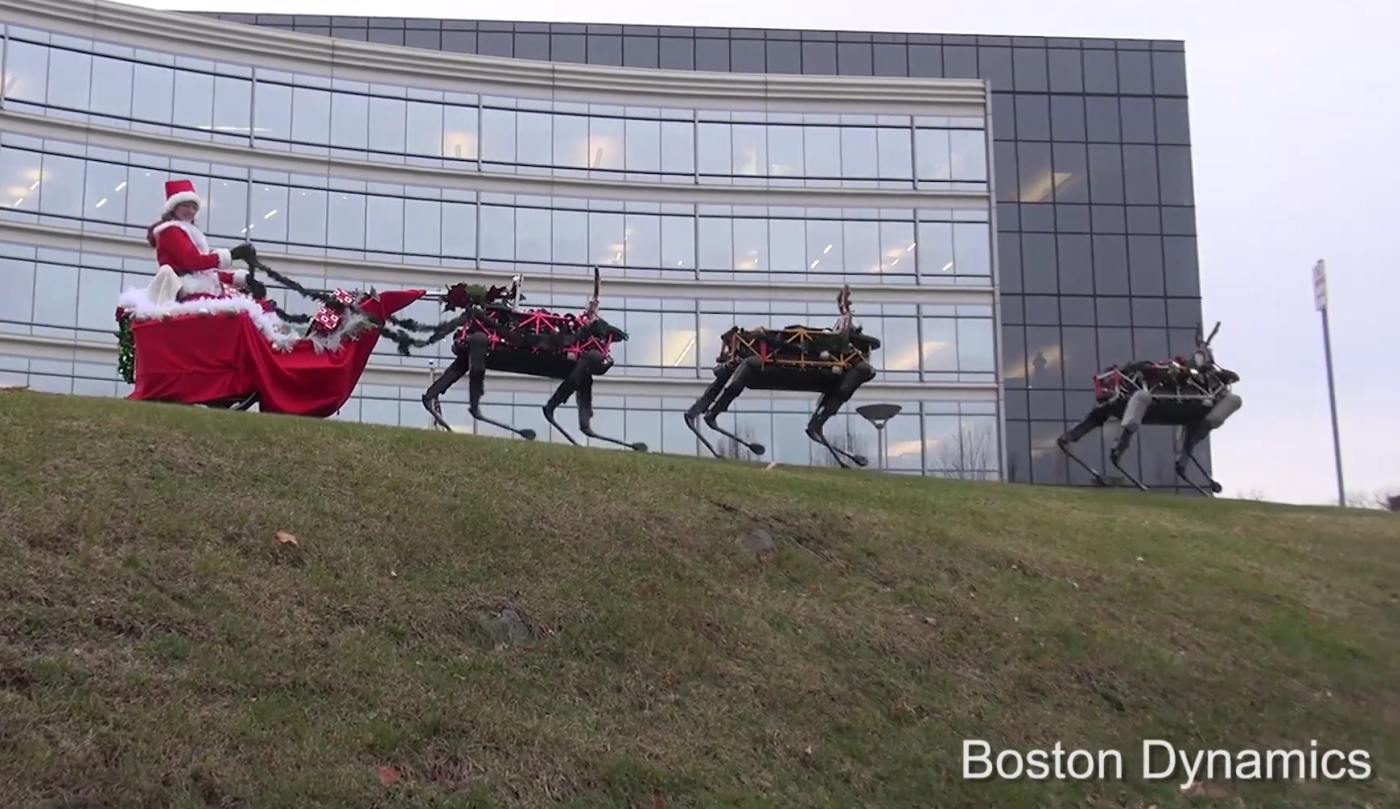 Google's parent company, Alphabet Inc, has decided to put its robotics division, Boston Dynamics, up for sale, according to a report from Bloomberg News. Per a pair of anonymous Google employees familiar with the matter, Alphabet executives are appar...
Google's parent company, Alphabet Inc, has decided to put its robotics division, Boston Dynamics, up for sale, according to a report from Bloomberg News. Per a pair of anonymous Google employees familiar with the matter, Alphabet executives are appar...
Alphabet is looking to sell off Boston Dynamics
 Google's parent company, Alphabet Inc, has decided to put its robotics division, Boston Dynamics, up for sale, according to a report from Bloomberg News. Per a pair of anonymous Google employees familiar with the matter, Alphabet executives are appar...
Google's parent company, Alphabet Inc, has decided to put its robotics division, Boston Dynamics, up for sale, according to a report from Bloomberg News. Per a pair of anonymous Google employees familiar with the matter, Alphabet executives are appar...
 Today on In Case You Missed It: The Georgia Tech Research Institute studied how people would react to a robot with clearly labeled 'emergency guide' signage, during a fire drill. Researchers thought humans would ignore the robots and go straight fo...
Today on In Case You Missed It: The Georgia Tech Research Institute studied how people would react to a robot with clearly labeled 'emergency guide' signage, during a fire drill. Researchers thought humans would ignore the robots and go straight fo...
 The US military recently decided that Google's Alpha Dog and Spot robots weren't ready for active duty, leaving the four legged robots with nothing to do. In the meantime, Google is doing with its battery-powered Spot robot what we probably would --...
The US military recently decided that Google's Alpha Dog and Spot robots weren't ready for active duty, leaving the four legged robots with nothing to do. In the meantime, Google is doing with its battery-powered Spot robot what we probably would --...
 It's been a week of mixed news for the tech industry. Boston Dynamics and MIT showed off new devices that could radically advance humanity while, at the same time, Sharp spent billions on a company whose employees regularly throw themselves from its...
It's been a week of mixed news for the tech industry. Boston Dynamics and MIT showed off new devices that could radically advance humanity while, at the same time, Sharp spent billions on a company whose employees regularly throw themselves from its...
 Today on In Case You Missed It: A professor from California is working on a plan to use photonic propulsion to get a spacecraft to Mars within 72 hours. It would use get the craft off of earth with the power generated by photons leaving a laser.
Today on In Case You Missed It: A professor from California is working on a plan to use photonic propulsion to get a spacecraft to Mars within 72 hours. It would use get the craft off of earth with the power generated by photons leaving a laser.
 Over the years we've watched in awe as Boston Dynamics has refined the design of its humanoid Atlas robot, and this new version is impressing us once again. Last year the Alphabet-owned group showed off a battery-powered version of the robot, and now...
Over the years we've watched in awe as Boston Dynamics has refined the design of its humanoid Atlas robot, and this new version is impressing us once again. Last year the Alphabet-owned group showed off a battery-powered version of the robot, and now...
 Last year Google shipped off some of its wilder projects for administration under new parent company Alphabet, which included its efforts with robots and the lab formerly known as Google X. A New York Times report says that the latter, now just known...
Last year Google shipped off some of its wilder projects for administration under new parent company Alphabet, which included its efforts with robots and the lab formerly known as Google X. A New York Times report says that the latter, now just known...
 The Legged Squad Support System (LS3, or AlphaDog) won't be part of the near-future Marine corps. Following years of development and improvements through DARPA and Boston Dynamics, the robot was deemed too loud and difficult for deployment. The robo...
The Legged Squad Support System (LS3, or AlphaDog) won't be part of the near-future Marine corps. Following years of development and improvements through DARPA and Boston Dynamics, the robot was deemed too loud and difficult for deployment. The robo...
 Whether you think holiday greeting cards are touching or annoying, Boston Dynamics is celebrating the season just a little differently with this new video. Its robots have shown they are capable of navigating almost any environment with surprising sp...
Whether you think holiday greeting cards are touching or annoying, Boston Dynamics is celebrating the season just a little differently with this new video. Its robots have shown they are capable of navigating almost any environment with surprising sp...
